This simple felt tip pen paper chromatography experiment is a great way to learn about this particular method of separating mixtures.
Felt tip pen chromatography is a fantastic science activity for kids as it usually works well and quickly, so children can admire their colourful creation after just a few minutes!
WHAT IS CHROMATOGRAPHY?
Chromatography is a technique used to separate mixtures. Information from a chromatography investigation can also be used to identify different substances.
In chromatography, the mixture is passed through another substance, in this case, filter paper. The different-coloured ink particles travel at different speeds through the filter paper, allowing the constituent colours of the pen ink to be seen.
All types of chromatography have two phases: a mobile phase where the molecules can move and a stationary phase where they can't move. In the case of paper chromatography, the stationary phase is the filter paper, and the mobile phase is the solvent ( water ).
The more soluble the ink molecules, the further they are carried up the paper.
The video below shows chromatography in action.
Paper Chromatography Experiment
You'll need:
Filter paper or paper towel
Felt tip pens - not washable or permanent
A container - glass, jar or plate
A pencil
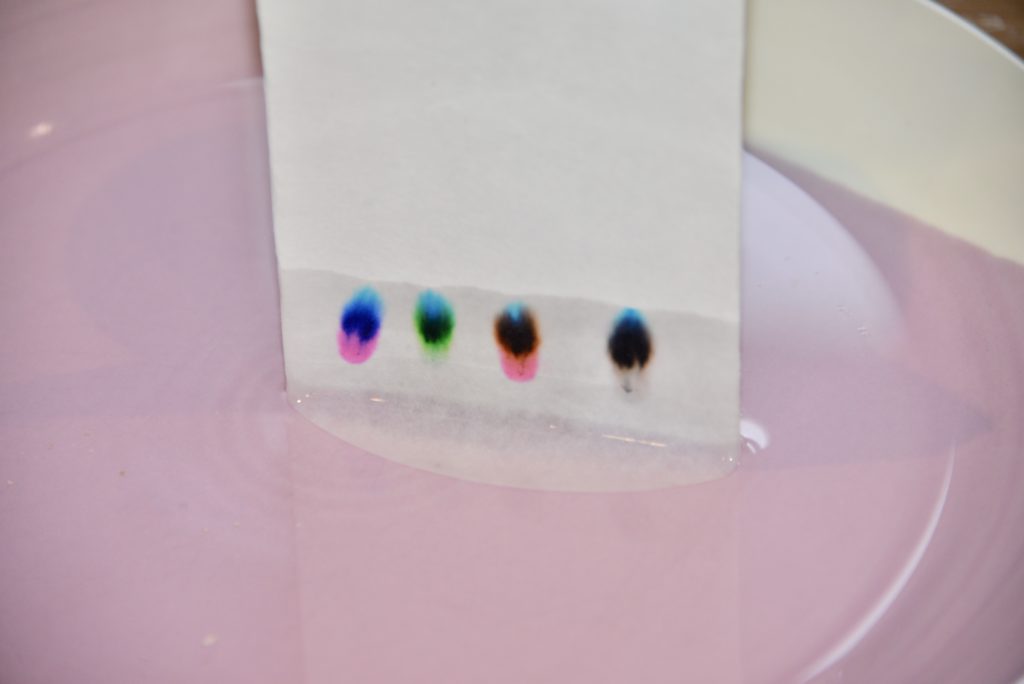
Instructions
Pour a small amount of water onto a plate or into the bottom of a jar.
Find a way to suspend the filter paper over the water so that just the very bottom touches the water. If you do the experiment in a jar, the easiest way to do this is to wrap the top of the filter paper around a pencil, clip it in place, and suspend it over the top of the jar.
Our LEGO holder worked well, too!
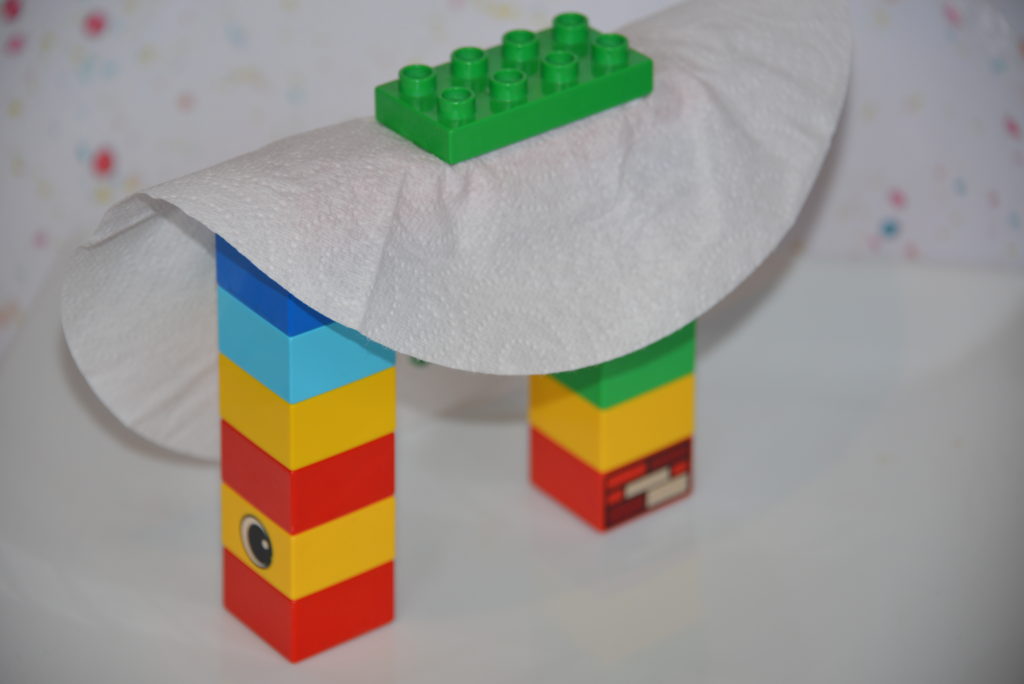
Use the felt tip pens to draw a small circle about 1cm from the bottom of the filter paper with each colour pen you want to test.
Suspend the filter paper in the water and watch as the ink moves up the filter paper.
You should end up with something like this! The end result is called a chromatogram.
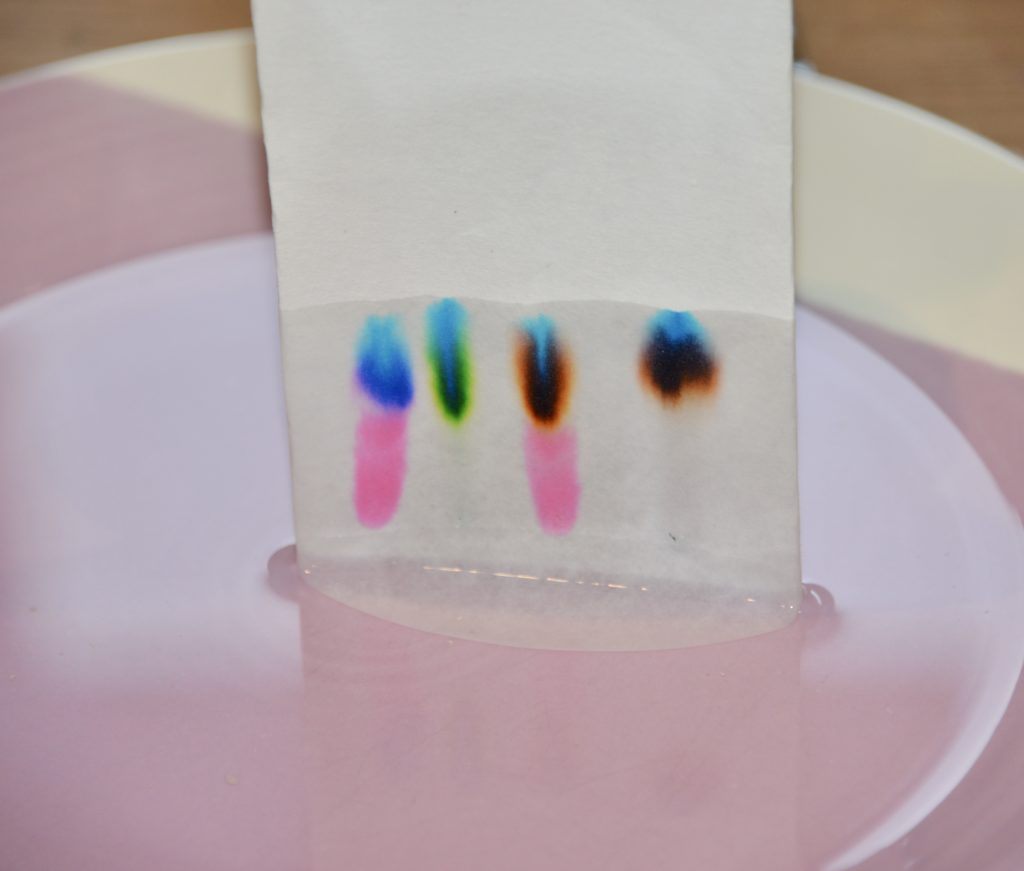
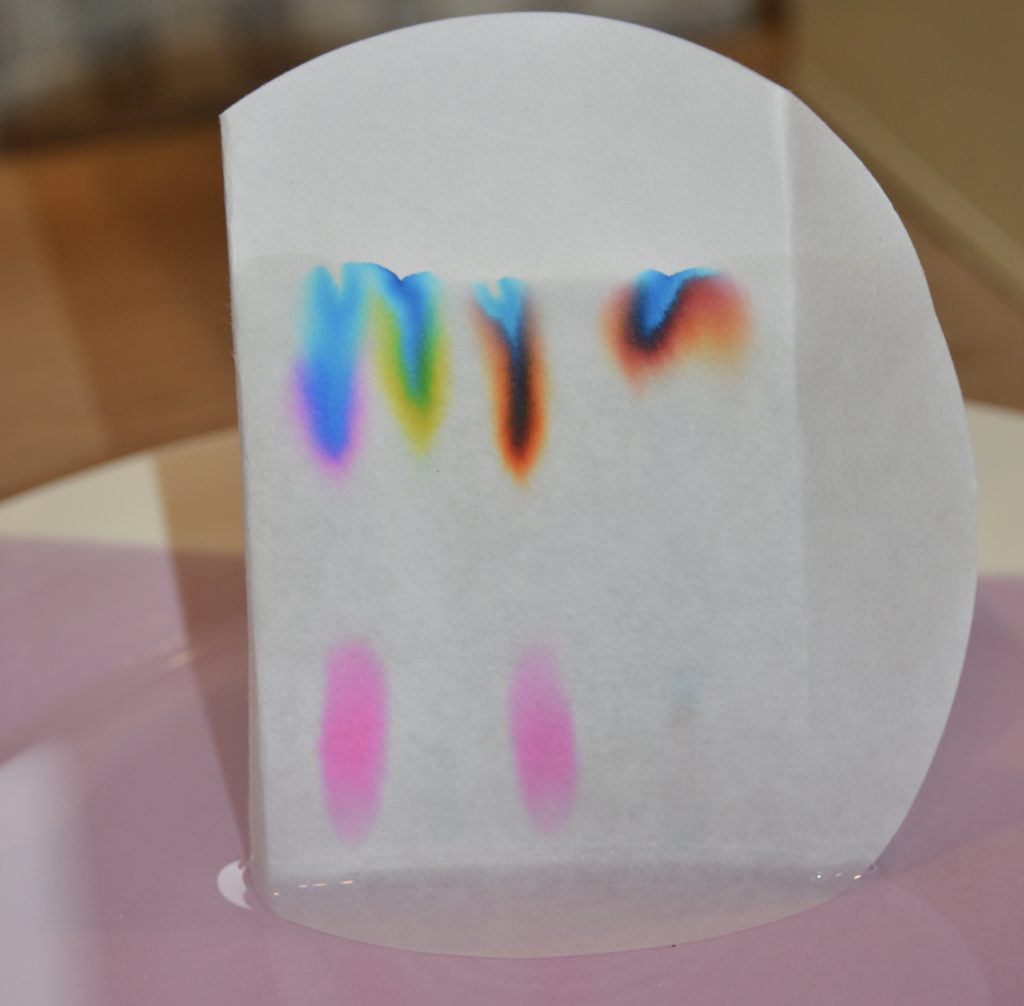
What happens if you use washable pens?
If the inks are washable, they tend to contain just one type of ink, so there is no separation of colour.
Below, only a couple of the inks have separated compared to the non-washable pens above.
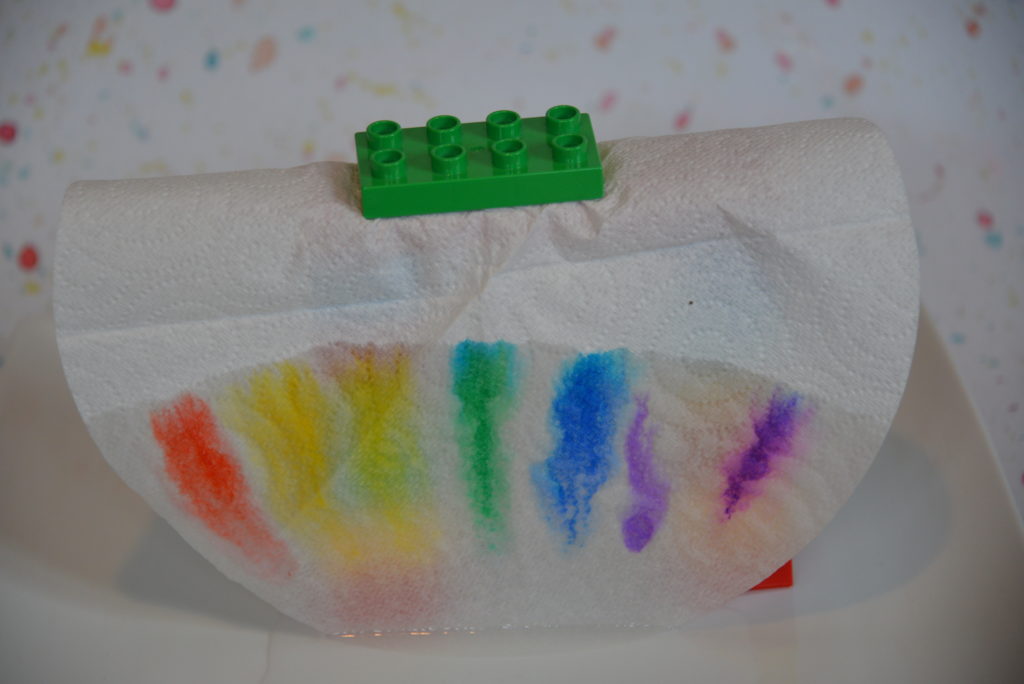
Why does chromatography work?
When the filter paper containing the ink spots is placed in the solvent ( in this case, water ), the dyes travel through the paper.
Different dyes in ink travel through the chromatography filter paper at different speeds. The most soluble colours dissolve and travel further and faster than less soluble dyes, which stick to the paper more.
I've created a free instruction sheet and chromatography experiment write up to make the activity even easier.
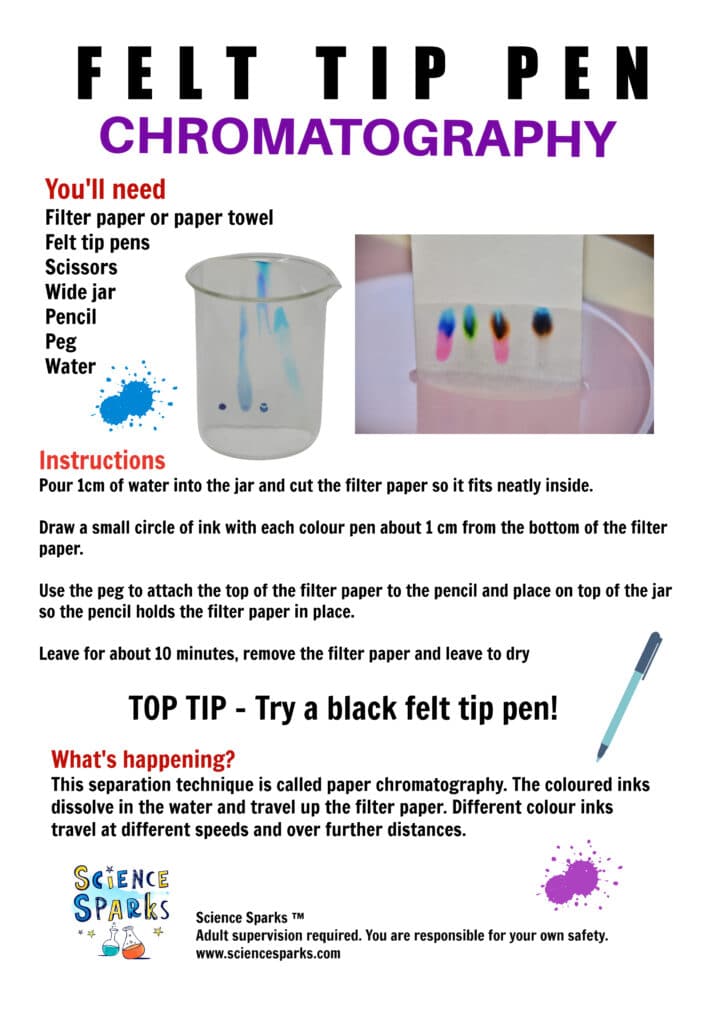
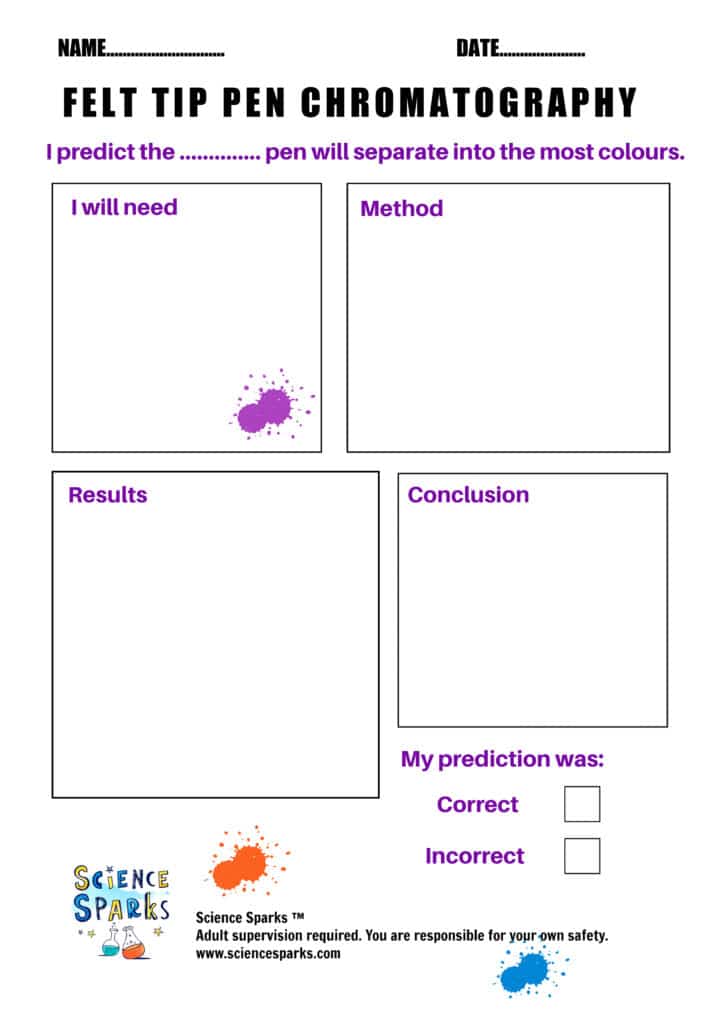
Extension task
Experiment with different types and colours of pens. Depending on the type of ink used, some will work better than others.
Try chromatography with sweets.
Steamstational also has a great leaf chromatography investigation.
More separation experiments
Clean up water by making your own filter.
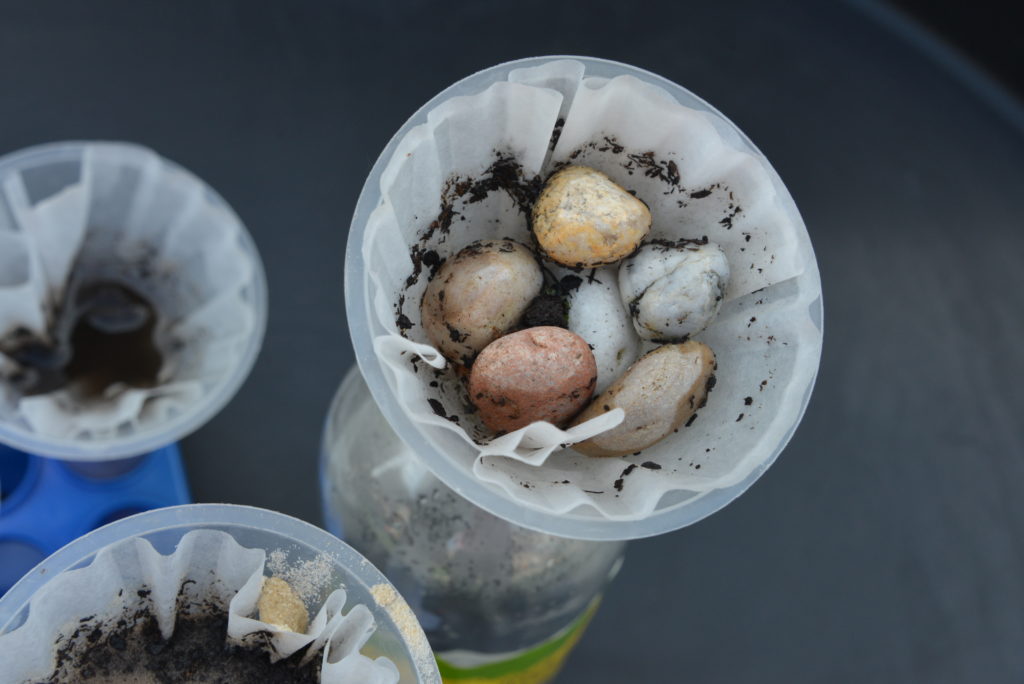
Separate water and sand by evaporation.
Make colourful salt crystals by separating salt and water.
Separate liquid mixtures with a bicycle centrifuge.
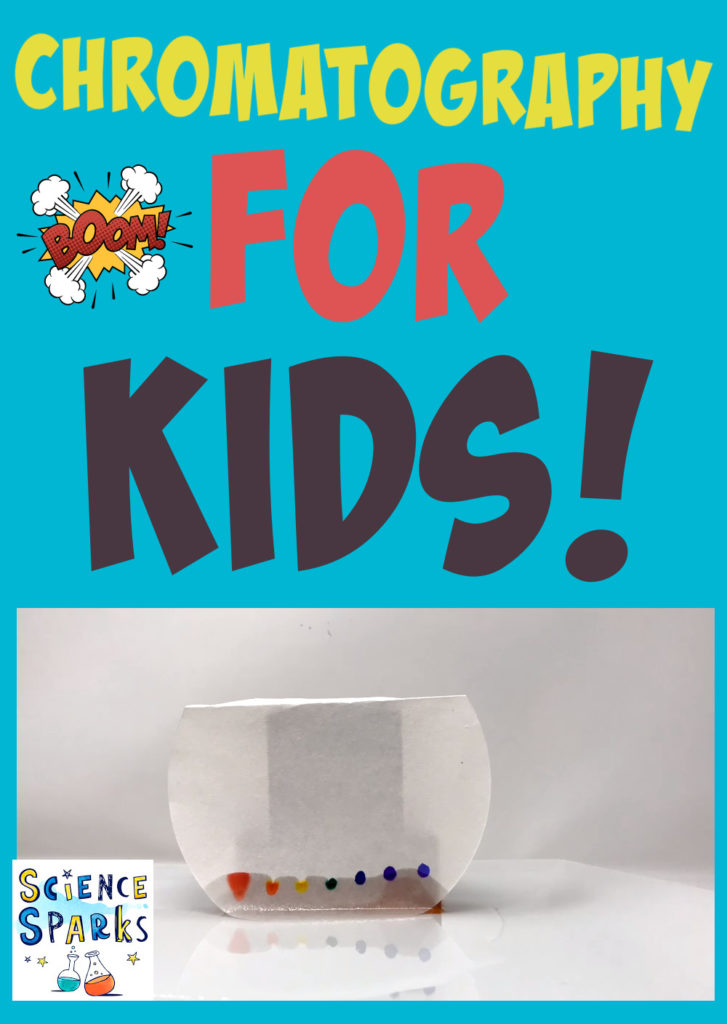
Last Updated on March 31, 2025 by Emma Vanstone
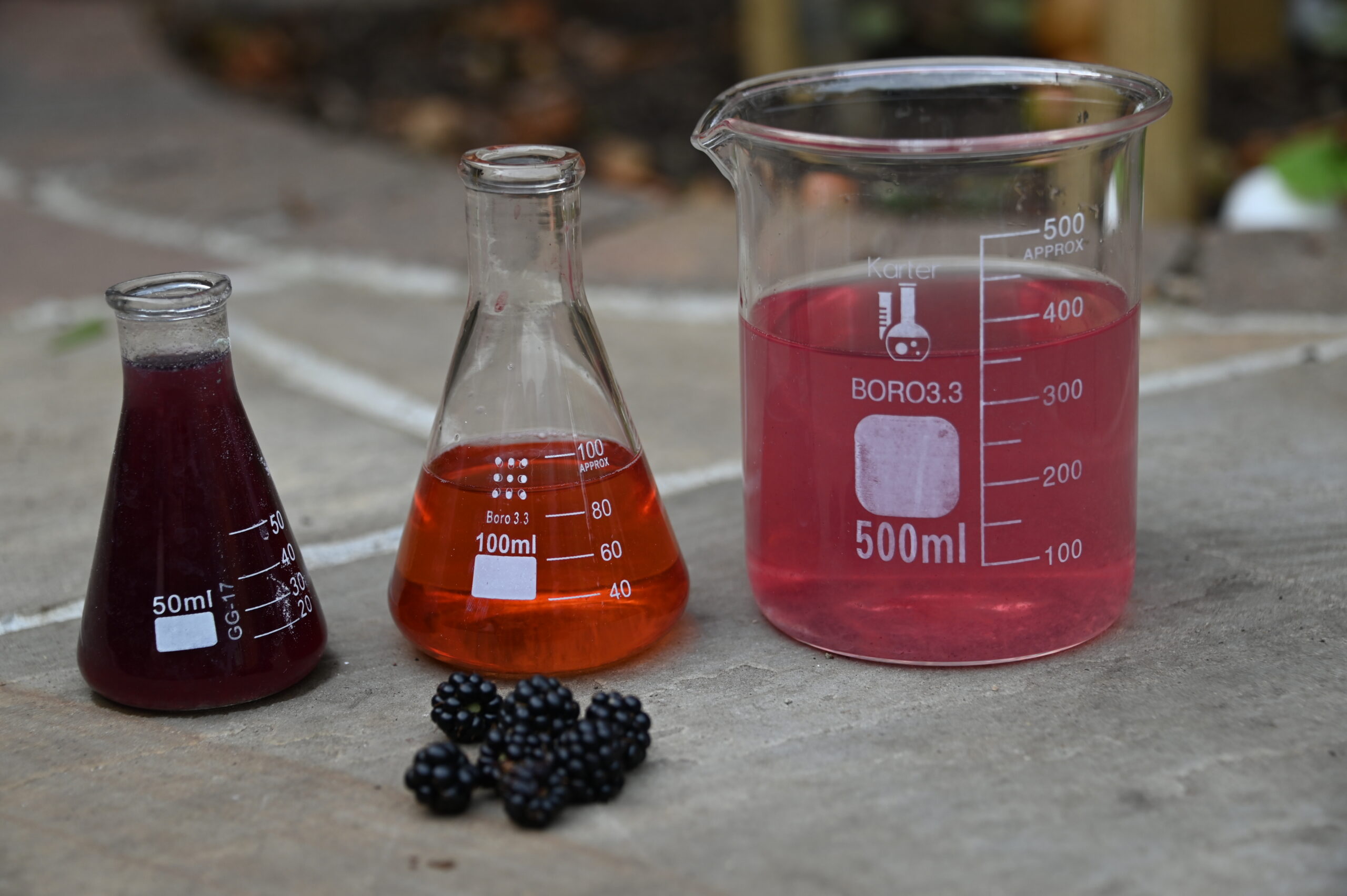
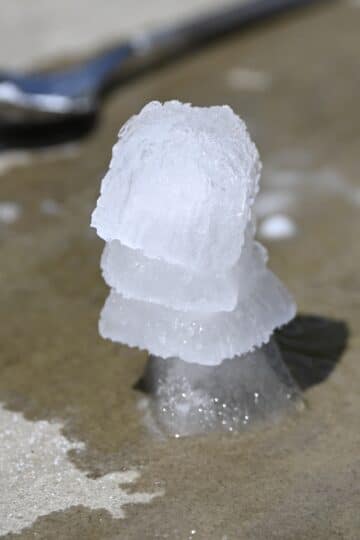
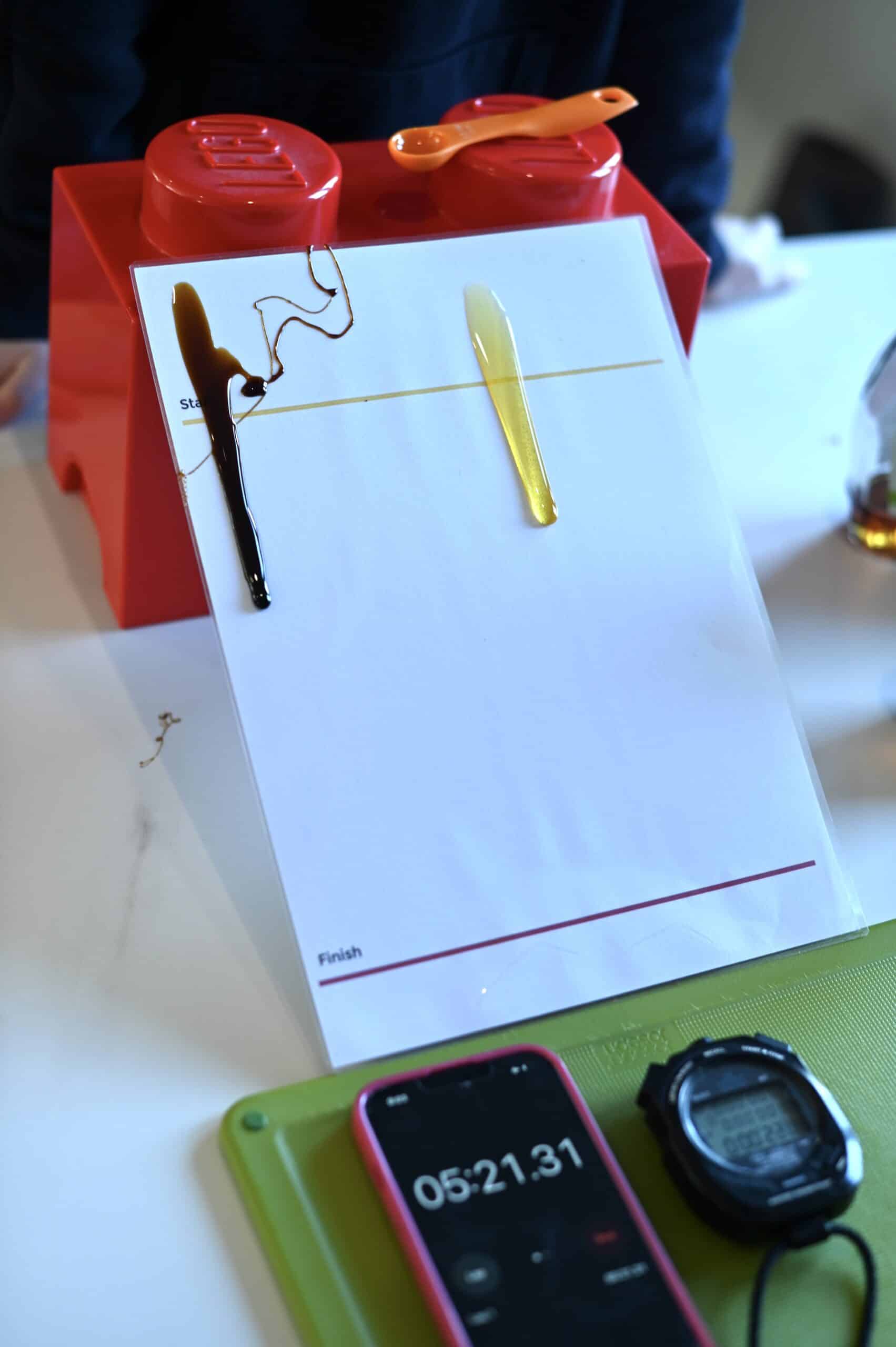
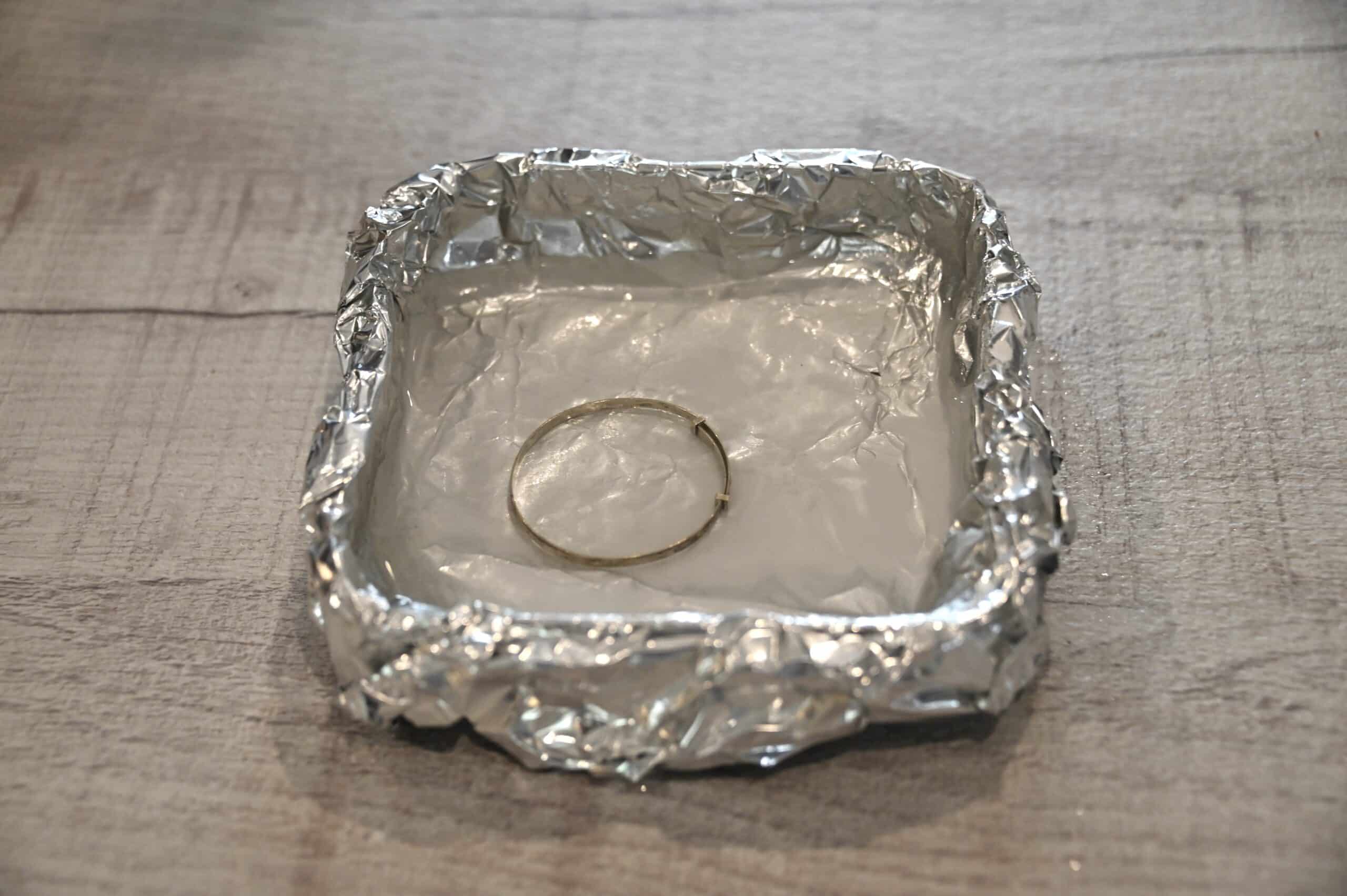
Leave a Reply